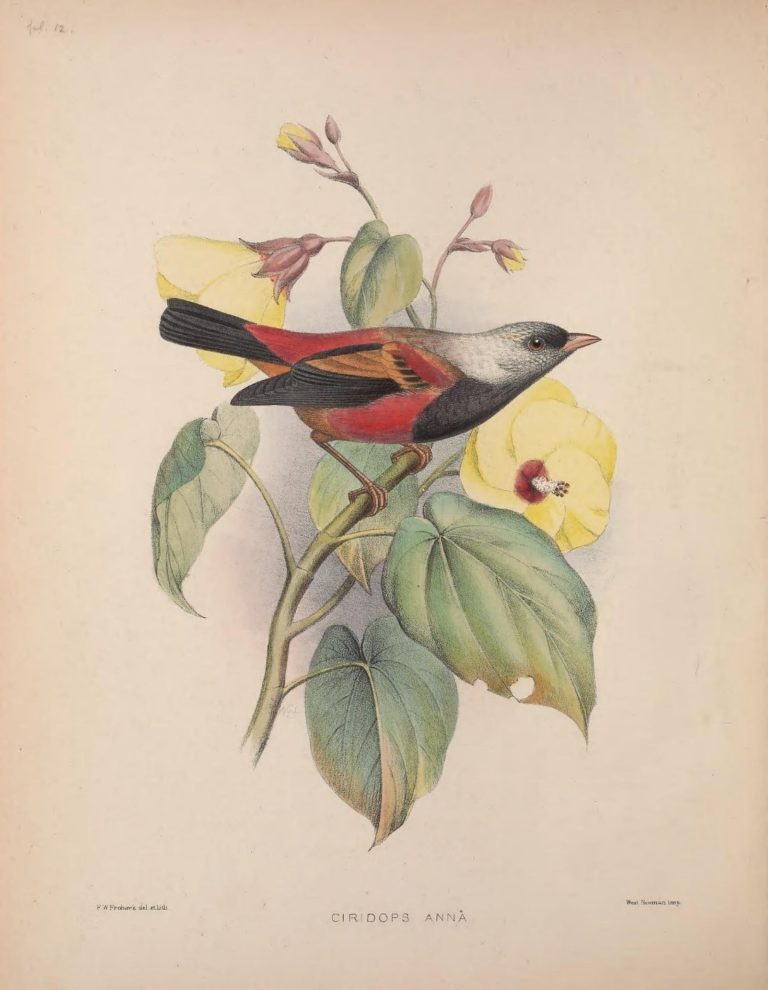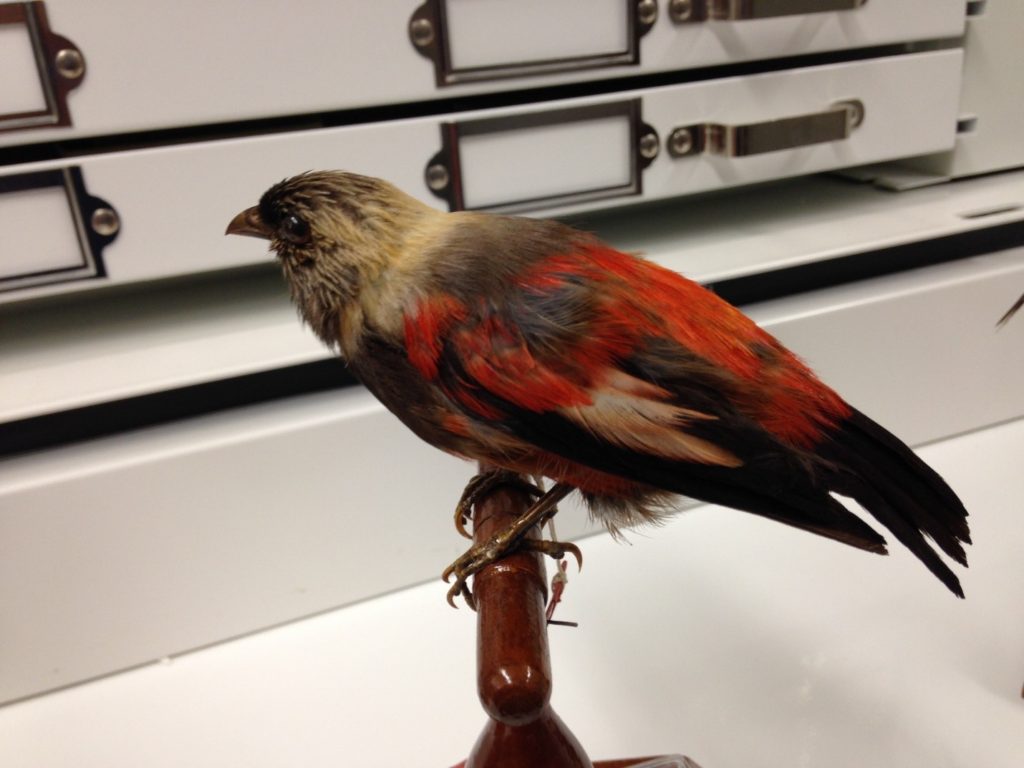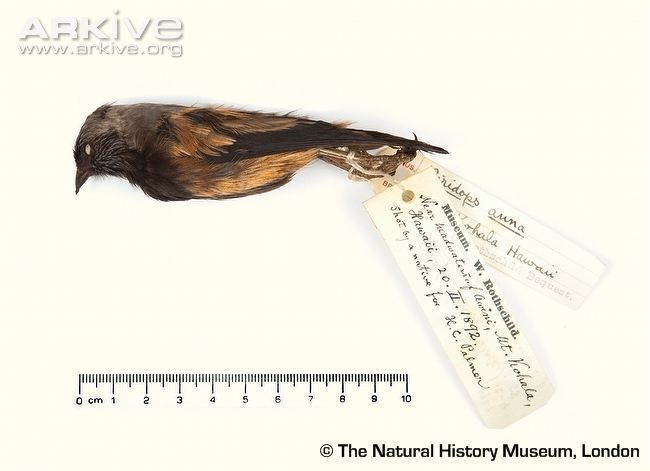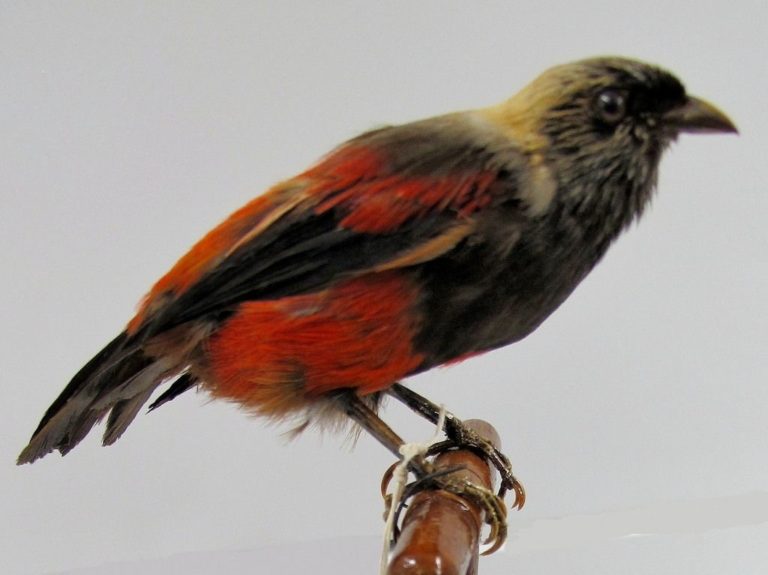Birdfinding.info ⇒ The Ula-ai-hawane is known mainly from five specimens taken between 1859 and 1892. The collection dates and locations were not well-documented. They were reputed to be from the northern portion of the Big Island—with at least two from the hills above Hilo and another from the Kohala Mountains—where they were associated with groves of Pritchardia palms, which produce the “hawane” fruit for which the bird is named.
Ula-ai-hawane †
Ciridops anna
Extinct. Formerly endemic to the Big Island of Hawaii.
Identification
A small honeycreeper with a tanager-type bill.
Male plumage was striking and distinctive: a mostly red belly, back, rump, and shoulders; a mostly black head, breast, wings, and tail; with a gray partial hood, mantle, and streaking on the face and breast.
Female was olive overall, somewhat darker above, paler and grayer below, with dim yellowish highlights in areas where the male was bright-red: the wings, back, rump, and belly.

Ula-ai-hawane, male. Frederick Frohawk, 1899

Ula-ai-hawane, male. © Dan Lewis

Ula-ai-hawane, male. © The Natural History Museum, London

Ula-ai-hawane, female. (AMNH Cat. 230275.) © Andrew Esposito
Notes
Monotypic species.
IUCN Red List Status: Extinct.
References
BirdLife International. 2016. Ciridops anna. The IUCN Red List of Threatened Species 2016: e.T22720840A94686158. https://dx.doi.org/10.2305/IUCN.UK.2016-3.RLTS.T22720840A94686158.en. (Accessed May 23, 2020.)
Hume, J.P. 2017. Extinct Birds (Second Edition). Bloomsbury Publishing PLC, London.
Pratt, H.D. 2005. The Hawaiian Honeycreepers: Drepanidinae. Oxford University Press.
Pyle, R.L., and P. Pyle. 2017. The Birds of the Hawaiian Islands: Occurrence, History, Distribution, and Status. Version 2 (January 1, 2017). http://hbs.bishopmuseum.org/birds/rlp-monograph/. B.P. Bishop Museum, Honolulu, Hawaii.
